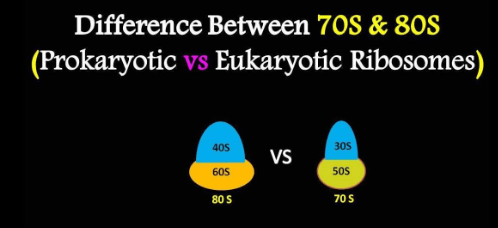Difference Between 70S and 80S Ribosomes
Ribosomes are essential cellular components whose function is to synthesize proteins. Proteins play many roles in our bodies – from repairing cell damage to providing structural support.

Life as we know it is divided into prokaryotes and eukaryotes, each with its specific ribosome structure. Eukaryotic ribosomes are called 80S ribosomes and prokaryotic ones like bacteria have a smaller version called 70S ribosomes. Read on for more differences between the two.
What is Ribosomes?
Ribosomes are particles that are abundant in cells and primarily function as sites for protein synthesis. They occur as free radicals in prokaryotic and eukaryotic cells and, in the case of eukaryotic cells, are also related to the endoplasmic reticulum membrane.
Ribosomes were discovered in 1955 by the Romanian-American cell biologist George E. Schmidt. Palades did it; In a discovery, he found that he was connected to the ribosomal network in eukaryotic cells.
In addition to making proteins, they also work by binding to messenger ribonucleic acid (mRNA) and taking information carried in the nucleotide sequence of mRNA Transfer RNA’s containing amino acids enter ribosomes at the acceptor site. Once added, the tRNA adds additional amino acids to the growing protein chain.
Difference Between 70S and 80S Ribosomes
| 70S Ribosome | 80S Ribosome |
| Occurrence | |
| In prokaryotes such as bacteria. Also occurs in eukaryotic cells | Exclusively occurs in eukaryotes |
| In the Cell | |
| Found freely inside the cytoplasm of prokaryotes. ALSO occurs in eukaryotic cell organelles such as mitochondria and chloroplast | Found inside the cytoplasm or attached to the Endoplasmic reticulum |
| Synthesis | |
| Synthesized inside the cytoplasm of prokaryotes | Synthesized inside the nucleolus |
| Subunits | |
| Small 30S and large 50S | Small 40S and large 60S |
| RNA | |
| 3 molecules of RNA | 4 molecules of RNA |
| Weight | |
| 2.7-3.0 million Daltons | 4.0-4.5 million Daltons |
| Sedimentation Coefficient | |
| 70 | 80 |
| Number of proteins | |
| 55 protein molecules, with 34 in larger subunit and 21 in smaller subunit | 73 protein molecules, with 40 in larger subunits and 33 in smaller subunits |
| Number of Amino Acids | |
| Around 8,000 | Around 16,000 |
| RNA-to-Protein ratio | |
| 2:1 (more RNA) | 1:1 |
| Influence of Antibiotics | |
| Protein synthesis is inhibited by antibiotics | Protein synthesis is NOT inhibited by antibiotics |